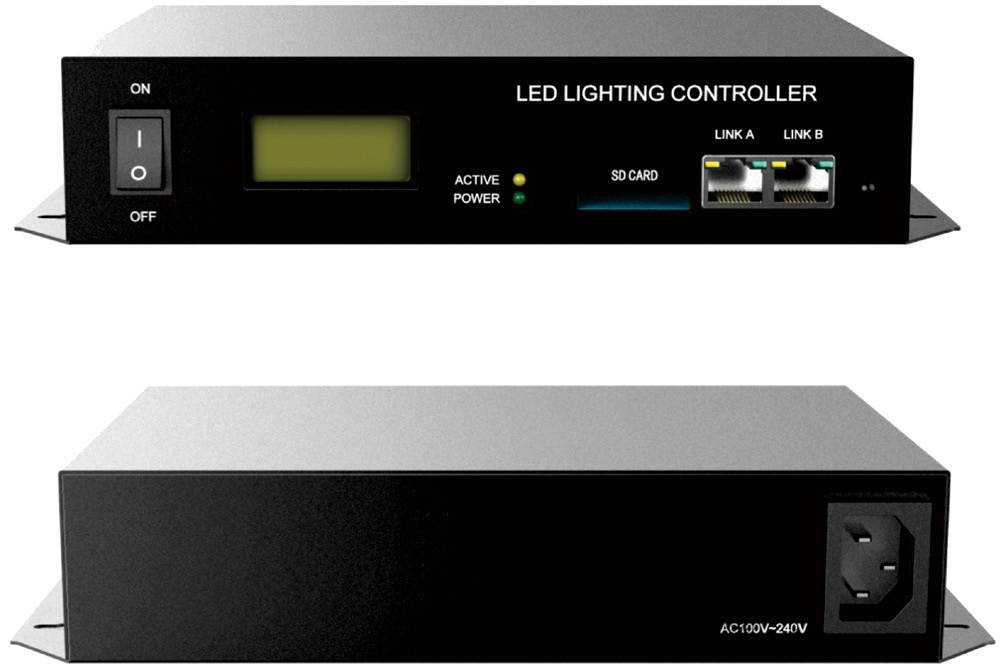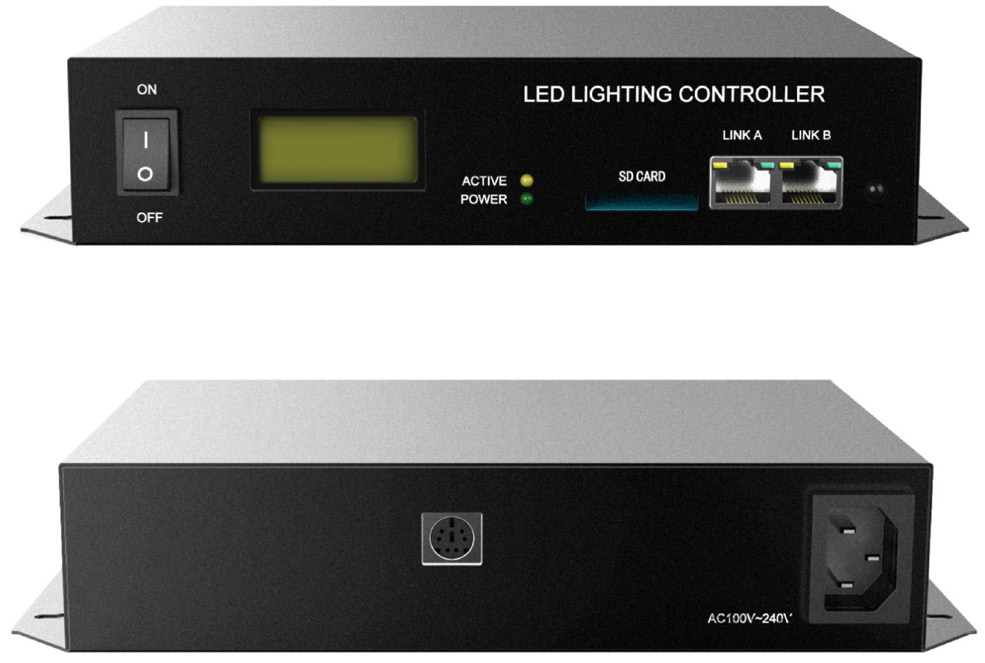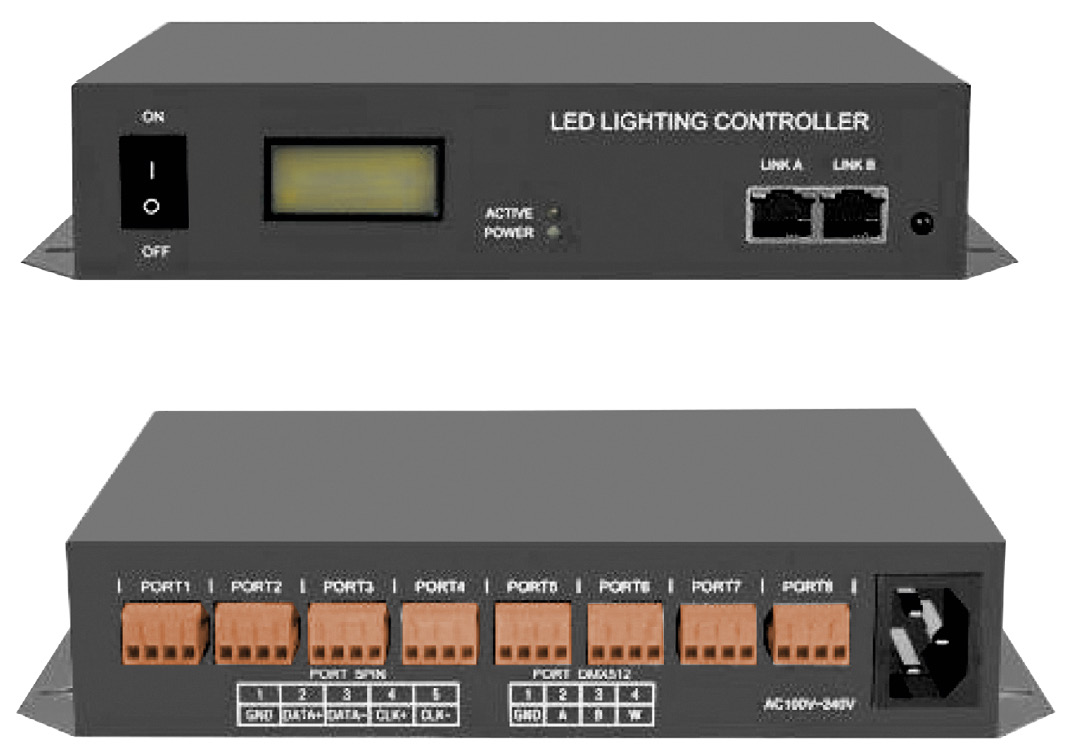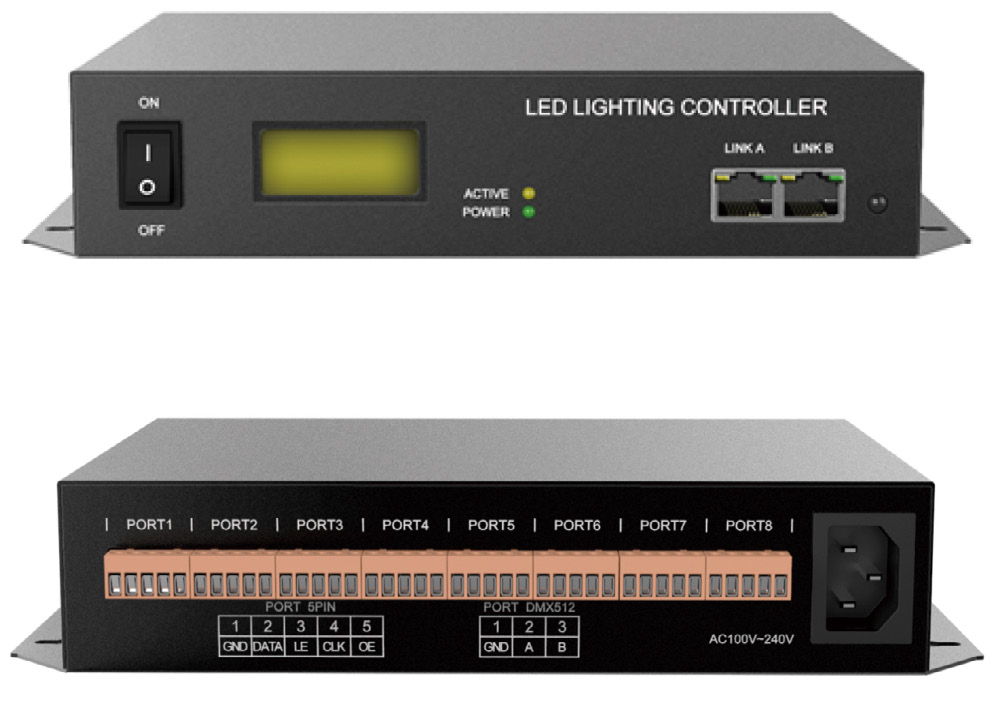Now, as part of the field of semiconductor lighting, neon lights and some traditional light sources for urban landscape lighting and indoor and outdoor decorative lighting have basically been replaced by LED light sources with energy saving, environmental protection, long life, high reliability and achievability. With the increase of lighting projects, the control effect is also required to become more and more complex, so the control method has become the object we must understand. At present, there are mainly five LED lighting equipment control methods on the market:
1. Frontier phase cut (FPC), thyristor dimming
2. Rear edge phase cut (RPC), MOS tube dimming
3. 1-10VDC (or 0-10VDC)
4. DALI (Digital Addressable Lighting Interface)
5. DMX512 (or DMX)
1. Frontier phase cutting (FPC), thyristor dimming
Leading-edge dimming is to use a thyristor circuit, starting from AC phase 0, the input voltage is chopped until the thyristor is turned on, and there is no voltage input.
The principle is to adjust the conduction angle of each half-wave of the alternating current to change the sinusoidal waveform, thereby changing the effective value of the alternating current, so as to achieve the purpose of dimming.
Leading-edge dimmers have the advantages of high adjustment accuracy, high efficiency, small size, light weight, and easy remote control, and are compatible with existing lines without rewiring, so they dominate the market, and most manufacturers' products are This type of dimmer.
However, leading-edge dimmers tend to generate large noises. This dimming method is not recommended for high-demand occasions, and the feature of the thyristor half-controlled switch is that it only has the function of turning on the current, and cannot completely turn off the current. At the lowest level, there is still current passing through, and the micro-current light-emitting characteristics of LEDs make some thyristors dimming, and many LEDs still emit weak light after they are turned off.
2. Rear edge phase cut (RPC), MOS tube dimming
Back-edge phase-cut dimmers are made of field effect transistors (FETs) or insulated gate bipolar transistors (IGBTs). Generally, MOSFETs are used as switching devices, so they are also called MOSFET (MOS tube) dimmers. MOSFET is a full-control switch, which can control "on" and "off", so there is no such phenomenon that the thyristor cannot be completely turned off. There is no minimum load requirement, allowing for better performance on individual luminaires or very small loads. However, due to the high cost, relatively complex dimming circuit, and difficult stability, the dimming method using MOS tubes has not been developed. Generally, it is only made into a knob-type single-lamp dimming switch.
3. 1-10VDC (or 0-10VDC)
0/1-10VDC is an analog dimming signal, generally 0V or 1V means the darkest brightness, 10V is the maximum brightness, and the brightness is adjusted linearly. There are two independent circuits in the dimming device, one is an ordinary voltage circuit, used for The power to the lighting fixture is turned on or off, and the other is a low voltage circuit that provides a reference voltage that tells the lighting fixture how much to dim. Simple application, good compatibility, high precision and good dimming effect. However, the low-voltage control signal requires an additional set of lines, which greatly increases the requirements for construction.
4. DALI (Digital Addressable Lighting Interface)
Digital Addressable Lighting is an international standard for digital lighting control. The full name of DALI is the acronym for "Digital Addressable Lighting Interface". It is an international digital addressable interface standard. The DALI standard has defined a DALI network, including a maximum of 64 units (with independent addresses), 16 groups and 16 scenes. Different lighting units on the DALI bus can be flexibly grouped to realize control and management of different scenes. In practical applications, a typical DALI controller controls up to 40~50 lights, which can be divided into 16 groups, and can process some actions in parallel at the same time. DALI is not a real point-to-point network. Compared with 1-10V dimming, the brightness adjustment is not affected by the distance, the brightness is consistent, the anti-interference ability is strong, the control is flexible, and the engineering wiring is simple. Not only can single lamp control, lamp group control , It can also monitor and query the state of the light, which belongs to an intelligent control system. DALI is oriented to traditional lighting control, focusing on the static control of the system. However, in order to ensure that the single-chip microcomputer is on standby at any time, it still needs to consume power when the light is turned off, and additional control circuits and controllers need to be added.
5. DMX512 (or DMX)
At present, DMX512 is also the most widely used LED control system. DMX is the abbreviation of Digital MultipleX, which means multiple digital transmission. DMX512 is a standard protocol for digital communication networks, usually used to control the stage and effects, it divides the light level into 256 levels from 0-100%, and the control system can realize R, G, B, W each with 256 gray levels, truly realize Full Color. Compared with the traditional analog dimming system, the digital lighting system based on the DMX512 control protocol can provide powerful control functions for large and medium-sized indoor and outdoor LED lighting systems. DMX512 expresses dynamic effects, that is, the lights controlled by DMX give you the feeling that they are always changing, rendering an atmosphere, so it is generally used in landscape lights and stage lights, mainly in color changes.
For facade lighting and lighting renovation, similar to bars and KTVs, for application environments that require more color display of RGB and RGBW lights, it is recommended to use the DMX control method.
But the DMX control method requires a special wiring layout and type, and requires some programming in order to set the basic colors and scenes.
Offline Master Controller
WJ-SD50
l WJ-SD50 can be used as offline master control 120,000 points, SD card storage, external remote control, can realize offline timing playback, playback segment selection, overall brightness adjustment, white balance adjustment, playback speed adjustment, built-in animation test program and other functions, which greatly meets the needs of customers. And various requirements in debugging.
l The system can be widely used in: architectural landscape, hotels, supermarkets and department
stores, government lighting projects, construction projects, commercial spaces, airports, subways,
hospitals and other places. For investment owners and architects, designers, floodlighting engineers,
construction engineers and other professionals to provide a full range of technical solutions to architectural art visual.
Wireless master controller
WJ-SD30C
l WJ-SD30C can be used as an offline master control controller, the total number of points of the entire synchronization project reaches 100,000 points, and synchronization between multiple controllers can be realized by receiving BTS signals.
l Through SD card storage, to meet the needs of customers to synchronize multiple controllers when multiple buildings cannot be connected.
l The system can be widely used in: architectural landscape, hotels, supermarkets, department stores, government lighting projects, construction projects, commercial spaces, airports, subways, hospitals and other places. For investment owners and architects, designers, floodlighting engineers, construction engineers and other professionals to provide a full range of technical solutions to architectural art visual dynamic color lighting.
Sub-controller
WJ-980DW
l 32-65536 gray level control, which can truly restore the color and details of the image.
l 512 levels of three primary colors independent brightness control, making precise adjustment of
white balance easier and more effective.
l Hardware anti-gamma correction function adjusted according to human physiological visual characteristics.
l 100Hz refresh rate can ensure the stability of the picture.
l Using Ethernet interface and UDP network protocol, the maximum transmission distance is
100 meters.
l The display module displays the controller parame tersand status in time.
l The controller output is compatible with TTL level signal and differential signal dual mode.
l A variety of chip controls are integrated , and the control chip type , clock frequency , OE period ,
duty cycle , gray level and other parameters can be changed through software settings.
l Dual network interface , can realize the cascade connection between controllers ; the controller auto
matically detects , the software visually displays the connection status ; supports DMX 512 A P/ UCS 512
l Drive chip and support online addressing of control system.
l Each portcand rive 170 points , 512 channels.
l 8-port output , each port is isolated.
Sub-controller
WJ-980A
l 32-65536 gray level control, which can truly restore the color and details of the image.
l 512 levels of three primary colors independent brightness control, making precise adjustment of
white balance easier and more effective.
l Hardware anti-gamma correction function adjusted according to human physiological visual
characteristics.
l 100Hz refresh rate can ensure the stability of the picture.
l Using Ethernet interface and UDP network protocol , the maximum transmission distance is
100 meters.
l The display module displays the controller parame tersand status in time.
l The controller output is compatible with TTL level signal and differential signal dual mode.
l A variety of chip controls are integrated , and the control chip type , clock frequency , OE period ,
duty cycle , gray level and other parameters can be changed through software settings.
l Dual network interface , can realize the cascade connection between controllers ; the controller
auto matically detects , the software visually displays the connection status ; supports DMX 512 A P/UCS 512
l Drive chip and support online addressing of control system.
Each port can drive 1024 points, 3072 channels. 8-port output , each port is isolated.
Post time: Jun-20-2023







